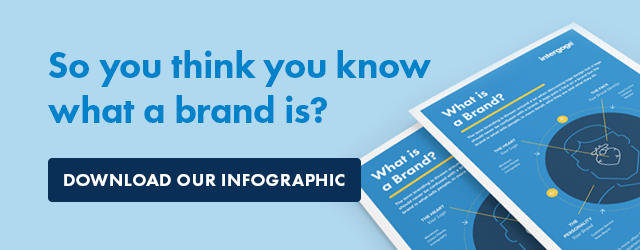The Importance Of Having High Quality Brand Assets
Do you want your company to be picked first, to stand out of the crowd and effectively be the ‘go-to’ people for your particular product or service? You’ll need to have a great looking brand to start with. These days, form is just as valuable as function.
Your audience is more likely to put their trust in a brand that looks professionally created and appears coherent throughout all marketing collateral. It’s this brand recognition that fuels new relationships and forms a loyal client base.
In this blog, I’ll explain the importance of having high quality assets at your disposal in a way that is easily digestible for all. Let’s start with logos…
Logo
The brand logo is the most important element of your brand arsenal. It is the one piece of your visual identity that must always be used on all marketing collateral. This promotes brand recognition at first glance and will retain the attention of the viewer if it feels familiar to them.
When a new logo is created, you should always be provided with various logo sizes, colour profiles (such as CMYK for print files and RGB for any screen based graphics) and also file formats. You’re probably familiar with JPGs as they are most widely used but they are not always the best quality.
Below is a comparison of a logo file in its original state and another, which has been increased and decreased in size over time. We’re all guilty of it, it’s quick and easy to just stretch it to the required size but the quality will suffer massively and therefore your brand will also.
We recommend keeping a master file of the logo somewhere easily accessible within your own computer filing system and then simply copying it to the relevant folder whenever needed.
Other formats you may be provided with are AI, EPS and PDF files. These files are your highest quality files, though you may not be able to actually view them without the correct design software. These are the files you’ll want to send to any designer/printer/publisher. Unlike JPGs, these files can be resized continuously and will never lose quality.
Photography
Photography is another key visual contributor to your brand. It will reinforce your brand messages and convey your brand’s personality/ethos, so it’s important to get it right.
Above are two photos that were taken at an event a couple of years ago. A photographer with professional equipment took the image on the left whilst the one on the right were captured by an attendee with a camera phone.
Whilst these camera phone photographs are ok for ‘live’ social media posts, they are unsuitable for most marketing collateral. The images taken by camera phones are often grainy and distorted due to low lighting conditions, poorly cropped or composed and more often than not, out of focus.
It pays to invest in a professional photographer or even a photography student with a keen appetite for expanding their portfolio. Individuals with a genuine passion for the medium will always get the best visual representation out of any situation and therefore your brand.
Brand Guidelines
One of the best ways to keep your brand looking consistent and professional is by putting together a brand guidelines document. You don’t want a collateral collection which consists of twenty different fonts and even more variations of the core brand colour. The viewer will immediately pick up on the fact that the marketing material looks different every time and you will lose their trust.
Brand Guidelines establish your brand identity within a document, which can then be distributed to any in-house or outsourced designer to follow. These guidelines can be as simple or as complex as you deem required. It’s worth having at least a one-page document that specifies your core brand colours and fonts so that less design-orientated members of your team are acting consistently when using social media or desktop publishing.
These are just a few ways of maintaining your brand’s quality standards throughout any implementation of marketing material.



